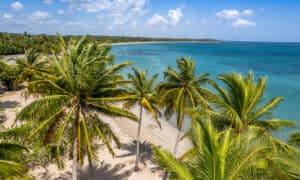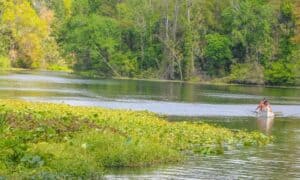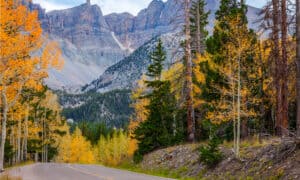You could travel all over the world and not find a sight quite as breathtaking as Yellowstone National Park. There are countless reasons 3.3 million people a year make the trip to the northwestern corner of Wyoming. In this article, we explore what’s special about America’s first national park, starting with just how big it is.

Yellowstone National Park is located in the northwestern corner of the state of Wyoming.
©Jess Kraft/Shutterstock.com
How Big Is Yellowstone National Park?
Yellowstone became America’s first national park in 1872 under the Presidency of Ulysses S. Grant. The park preserves a huge hydrothermal and geological site. It features steaming hot springs, geysers, mud volcanoes, lakes, waterfalls, and forests. Additionally, wildlife inhabits the sprawling landscape. Yellowstone National Park includes 2.2 million acres, which is 3,468 square miles or 8,983 square kilometers. That’s the size of Rhode Island and Delaware . . . combined! Most of the park is in Wyoming, but to the west and north, it extends into Idaho and Montana.
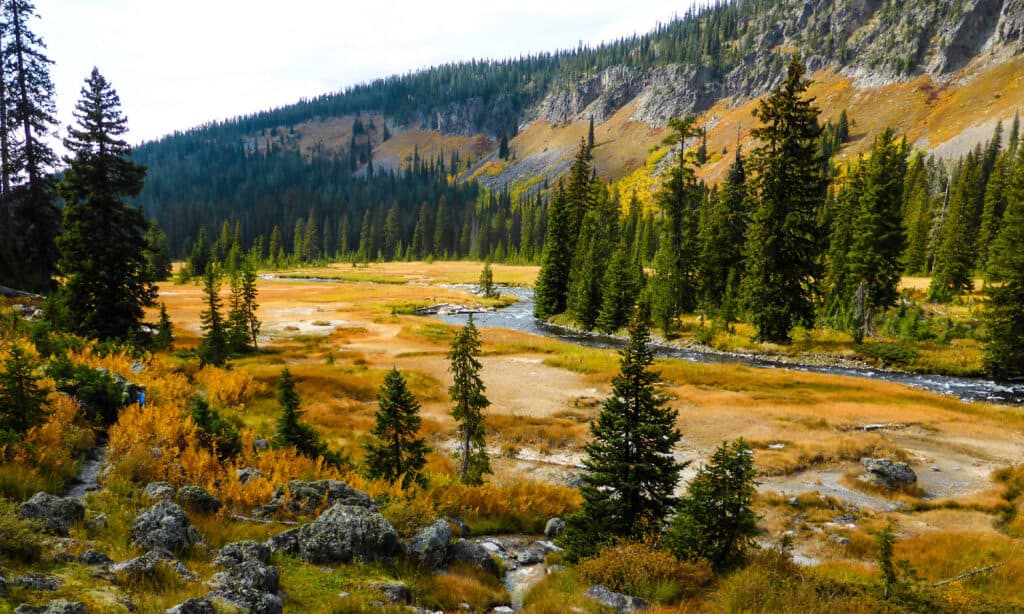
Yellowstone National Park is larger than the states of Rhode Island and Delaware combined.
©Wannabe Adventurer/Shutterstock.com
Geology of Yellowstone
Yellowstone is the geothermally active caldera of the largest supervolcano in North America. Although it is considered a dormant volcano, it has had massive eruptions over the past several million years. Another eruption is unlikely during our lifetime. However, an eruption could cover most of the continent with a layer of ash and darken the atmosphere for months. Scientists closely monitor this volcano to understand the underlying structure of the magma chamber beneath the caldera.
The visible effects of the volcano today include over 300 geysers, which make up half the geysers in the world. It also contains 10,000 thermal features such as hot mineral springs, pools of scalding acid, and bubbling mud flats. The hundreds of hot mineral pools around the park are astonishing in their array of rainbow colors, sometimes with rings of different colors around the same pool. This has to do with the mineral content and temperature of the water. These factors allow for different kinds of algae to grow at different levels as the water cools near the surface. Not only are some of the pools at high temperatures, but some have a deadly level of acidity as well. It’s important to follow directions: do not step off the designated boardwalks or throw objects into the water.

The hot mineral pools in Yellowstone come in an astonishing array of colors.
©Edward Fielding/Shutterstock.com
Wildlife of Yellowstone
Yellowstone is heavily forested and experiences wildfires every year. As long as they don’t consume too much of the forest at once, they are healthy for the ecosystem. Yellowstone also has some of the largest petrified forests in the world. There is abundant water from lakes and rivers, including 290 waterfalls. Large areas of the park are a grassland habitat, grazed by bison, moose, and elk. The largest carnivores in the park are grizzlies, wolves, and cougars. There are over 322 species of bird and 16 species of fish there. The park includes a lot of species that are endangered or vulnerable. Despite the large numbers of visitors and heavy traffic in the park, it’s possible to see some of these animals quite close . . . dangerously so. Careless visitors have been killed by bison and other large animals by not keeping a safe distance.
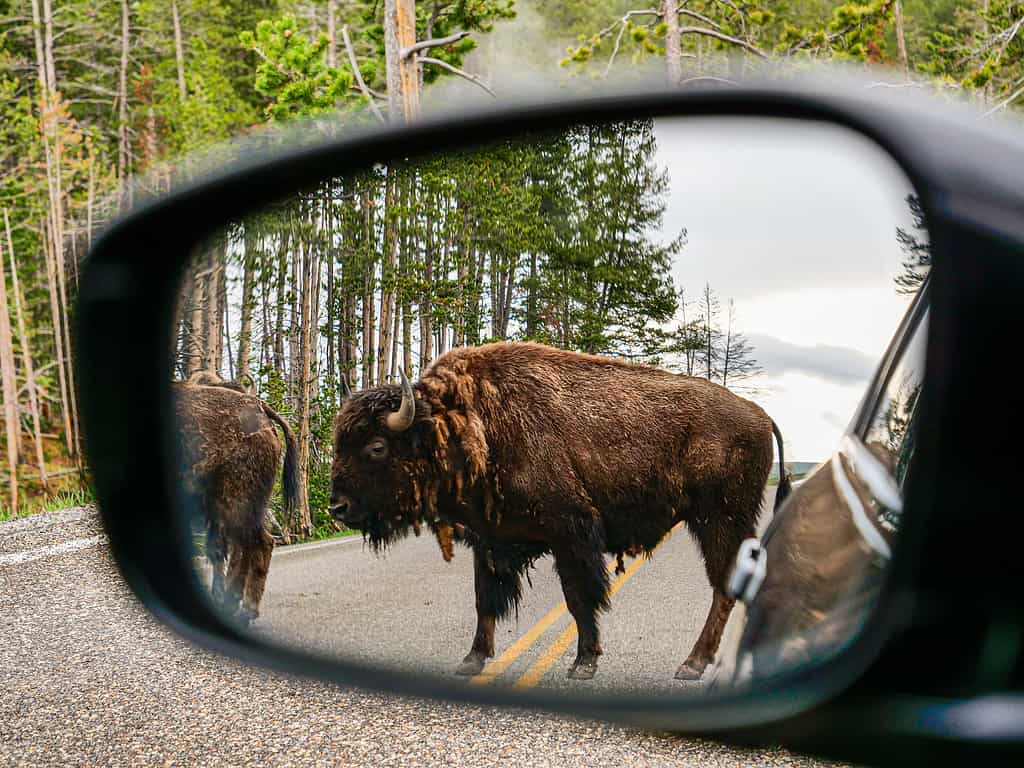
Bison in Yellowstone National Park frequently cross the road.
©iStock.com/Joseph Tointon
What Can You Do in Yellowstone?
Guests will typically drive the Grand Loop Road, a route that takes them past some of the park’s most popular attractions, including the Old Faithful geyser. There are pull-offs along the way where you can take a break from driving, enjoy a picnic, or take in the natural beauty without feeling rushed. There are a lot of opportunities to hike in the wilderness for different experience levels and either guided or unguided tours. Park rangers give talks and answer questions about the park and its flora and fauna. Camping, boating, and fishing are all popular. You can even join a covered wagon excursion into the park with an entertaining storytelling driver and a delicious chuckwagon meal prepared outdoors.
The park has over 2,000 campsites, but if you prefer to sleep indoors, you can stay in a room in one of the park’s lodges. Due to high demand, reservations have to be made months or even a year or more in advance. It’s worth it, though, because as long streams of cars leave the park in the evenings trying to get out to eating places and their hotels outside the park before dark, you can enjoy watching the sunset over the park and having some of the most popular attractions to yourself as the crowds rapidly thin out. Looking out across the park with these steaming vents, especially around sunset as the light casts an orange glow, gives the distinct impression of a scene from prehistoric times. After the sun goes down, you can be amazed by the star-strewn night sky as you listen to the sounds of the forest.

The steaming vents at Yellowstone can give the distinct impression of being in a prehistoric landscape.
©Marina Poushkina/Shutterstock.com
Unforgettable Yellowstone
Yellowstone is an unforgettable experience, whether you’re an old pro at camping or have never been in your life. With a little advance preparation, you can set up a trip that’s the right mix of adventure for you, knowing that even if all you do is drive through on the Grand Loop Road, you’re likely to see wildlife and natural features as you’ve never seen before.
The photo featured at the top of this post is © iStock.com/Bartfett
Thank you for reading! Have some feedback for us? Contact the AZ Animals editorial team.



